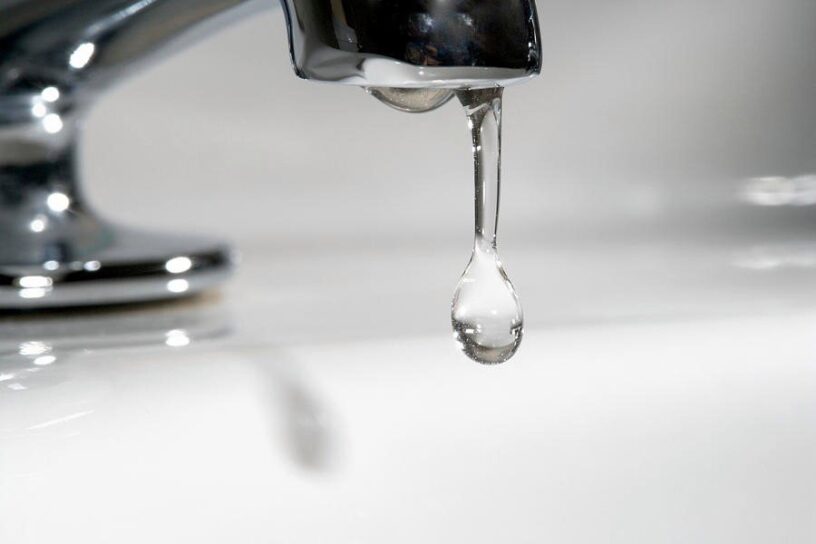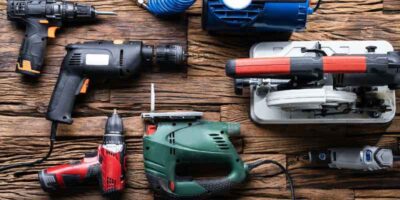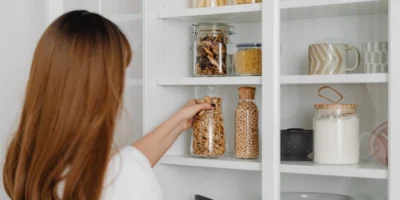This guide outlines how to measure water pressure and how to increase water pressure house or garden flow.
Water pressure is responsible for how quickly and how much water comes out of the water pipes. On the one hand, it depends on the pressure provided by the waterworks and how the incoming water pressure is regulated on site, for example with a pressure reducer on the main water connection. This can be important for factors like how to increase water pressure in shower heads or taps around the house and garden.
How to save water in the garden
How to increase water pressure house or garden flow
The first thing to do is to determine the water pressure to see how big the problem actually is.
Measure the water pressure: 2 methods
To measure the actual water pressure at the respective faucet, you can use a pressure gauge. Alternatively, you can measure the approximate pressure using a bucket of water and a stopwatch. Water pressure is measured in a unit called bars.
Measure water pressure with a pressure gauge
For this method you will need a pressure gauge. Especially if there are frequent problems with the water pressure, a one-time purchase of around twenty euros is worth it. The pressure gauge is screwed onto the respective faucet and it is turned on fully. You can then read the water pressure of the water flowing through the pressure gauge.
Measure water pressure with a stopwatch and a bucket of water
You can measure the approximate water pressure using a bucket of water and a stopwatch. Please note, however, that this measurement is only an approximation and not an exact measurement. To do this, you need a bucket of water with a capacity of 2.6 gallons (10 liters) and a stopwatch (e.g. your smartphone).
Once you turn the water on full and start filling the bucket, start the stopwatch. When the filling level has reached the2.6 gallons (10 liters) mark, stop the clock. The pressure can now be determined based on the required filling time.
- 25 seconds corresponds to approximately 5 bar
- 30 seconds corresponds to approximately 4 bar
- 40 seconds corresponds to approximately 3.5 bar
Compare the determined water pressure from the faucet with the set water pressure in the house to determine if there are any discrepancies you need to address for how to increase water pressure house or garden flow. For example, if the main tap is set to five bar, but only three bar comes out of the tap in the kitchen, it is worth looking more closely for the cause.
Please note that the cross-sections of the individual taps can be different and that more water will come out of a spout with a larger cross-section. This means that the pressure cannot be compared correctly.
How to increase water pressure house or garden flow: locate the problem
If you have measured and determined that the water pressure is too low, now it is time to identify exactly where the problem is.
Incoming water pressure from utility
Depending on the region and provider, the supply pressure is between two and eight bar. If you have the impression that the pressure in the house is already too low, the supplier can give you information about the pipe network.
There may be short-term outages due to construction work or maintenance. In the case of rental apartments, the landlord is the first point of contact for problems with supply pressure for how to increase water pressure house or garden flow.
If the water pressure from the supplier is generally too low, you need a pressure booster. This is a small pump that mechanically increases the water pressure. This pump must be checked for functionality every approximately six months.
Pressure display on the house connection
Unless it is due to the supply pressure, the house connection comes into consideration from how to increase water pressure house or garden flow. The house water filter is located directly behind the water meter, often in the form of a backwash filter.
This filter must be cleaned or replaced regularly. Dirt particles in the water are filtered out of the tap water at this point. If the filter is full, it can be responsible for poor flow and therefore a loss of pressure.
A backwash filter must be flushed every two months. If it is a filter with replacement candles, a visual inspection should be carried out two months after a change to see how dirty the filter is and then replaced if necessary. How often the filter actually needs to be replaced depends on the local water quality and the degree of contamination.
The house water filter often also includes a pressure reducer, where the pressure for the respective house is adjusted. Depending on the situation, the setting is too low and requires the pressure reducer to be readjusted to increase the water pressure.
Defective or narrowed lines
Further on the way to the taps, the pipes are a possible cause of a pressure loss. On the one hand, old pipes can become porous, which is water damage that needs to be repaired by a specialist as quickly as possible, and on the other hand, they can become narrow due to limescale deposits, which you need to address in how to increase water pressure house or garden flow.
Depending on the hardness of the water, more or less lime deposits on the inner walls of the water pipes over the years and thus ensures that the pipe diameter decreases more and more. A specialist will use various procedures to loosen the calcification and thus enable the flow to flow again.
Limescale deposits in the valve
Just like with the pipes, limescale deposits also build up in the valves. These are easy to reach even without a specialist, as they represent the transition from the water pipes in the wall to the tap in front of the wall.
If you want to clean the angle valves, you have to keep two things in mind. On the one hand, you have to turn off the main water pipe before work so that you can easily remove the angle valves.
On the other hand, many corner valve brands are provided with self-sealing threads. If you unscrew these now, they will no longer seal when tightened again. Either you replace the angle valves completely or you have to apply Loctite or hemp to them before screwing them in.
Faucet blockages
One of the factors for how to improve water pressure at home is that the interior of the faucet also becomes calcified over time, reducing the water flow and water pressure. Dirt, such as limescale, settles in the aerator and thus reduces the amount of water.
Use a special aerator key or pliers to remove the aerator from the tap. Rinse the aerator under running water and/or soak it in vinegar or descaler for a while if there are heavy limescale deposits.
Before you screw the aerator back on, briefly turn the water on at the tap to fully flush out any additional loose particles from the pipes. For the shower, this means that you have to descale the hand shower and shower head regularly.
ALSO READ: How to fix a dripping faucet
Garden irrigation via the tap water network
Even if the pressure in the house is OK and you don’t need to use measures for how to increase water pressure in your home, the pressure for watering the garden via the outdoor tap may not be sufficient. The causes are analogous to the house: clogged pipes and outlets or too little pressure across the entire system.
After installing the pressure reducer on the main water connection, check the performance of the pumps in particular. These may be too weak for garden irrigation. Exchange it for a more powerful model or increase the performance — if possible.
Garden irrigation via a rainwater tank
If you use a rainwater tank for garden irrigation and the outside tap is not connected to the regular pipe network, you have to look for the cause in the tank. There are two variants here: tank with pump or tank without pump.
In the first case, dirt deposits on the bottom of the tank cause blockages in the pump, resulting in a rapid decrease in performance. Cleaning helps here.
In the second case, the water flows from the tank to the outside faucet due to gravity. Here the pressure depends on the level in the water tank. The following applies: the higher the fill level, the higher the system pressure.
So if there is little or no water flowing, it helps to increase the amount of water in the tank. Alternatively — especially with small tanks — the problem can be solved by moving the tank to a higher position so that the water has to flow more “downhill”.
Summary
In short, for how to increase water pressure house or garden flow:
- Measure water pressure using a pressure gauge or the water bucket stopwatch method.
- The supply pressure is between two and eight bar and can be reduced using a pressure reducer and increased using a pump.
- The house water filter should be cleaned every two months, as a clogged filter reduces the water pressure.
- Limescale deposits in the pipes or valves reduce the water flow and thus the water pressure.
- Remove deposits in aerators and shower heads regularly to avoid problems with pressure.
- Clean rainwater tanks in the garden regularly and check the pumps for performance.




